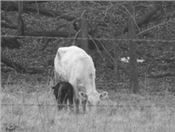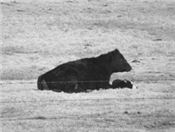March Can Be Brutal On Beef Cattle Says MU Extension Livestock Specialist
MT. VERNON, MO.
March could be the hardest month of the year on beef cattle according to Eldon Cole, field specialist in livestock with University of Missouri Extension.
“I’m not aware of any official statistics on death losses in Missouri by anyone, but it seems there are numerous deaths of both young and old cattle during those thirty-one days,” said Cole.
Why would March be any worse than the other eleven months? Cole says there are several reasons for the difference.
First, March is likely the month with the highest number of cows calving in it.
“With calving, we have difficult deliveries and mortalities of both the cows and calves,” said Cole.
Another reason is it is the end of the winter, and the feed supply leading up to it is not the best in quantity and quality.
“This winter, most cattle producers monitored their hay supply very closely and testing has revealed nutrient values to be somewhat lower this year since all kinds of unusual hay was put up, almost in desperation in 2018,” said Cole.
The low-quality hay or other stored forage results in cows losing body condition. A body condition score (BCS) amounts to about 80 pounds of actual weight on a cow. A mature cow with a BCS of 5 in November and December could easily lose 80 pounds by March.
Thin cows at 4 and lower BCS will have lower quality colostrum for the nursing calf. This results in the calf being weaker and prone to health problems like diarrhea and respiratory concerns when adequate colostrum is not consumed within 6 hours of birth.
“The thin, poor condition cows suffer more from the damp, chilly, muddy weather often seen in March. It can result in deaths of cows with the sole comment about why they died being that she just looked like she ran out of gas,” said Cole.
This year, more than normal, Cole says to plan to supplement the hay with a high energy supplement either corn, corn gluten feed or dried distillers grain. The amount fed may range from five to eight per cow, per day.
Cole says there are other tips that can perhaps help keep beef herd mortalities low include:
• Feed some alfalfa hay;
• Provide a creep area for calves to escape into to get out of the mud;
• Move bale rings regularly for sanitation purposes;
• Group newborns and their mothers apart from older calves;
• If you have a scours outbreak in a pasture, do the feeding and other chores in that pasture last;
• Be sure and thoroughly wash and sanitize your boots and clothing before going to a "clean" pasture; and
• Treat sick animals immediately after finding them.
“Some of the tips are hard to do but do the best you can,” said Cole. ∆

This calf probably did not receive adequate quality and quantity of colostrum form the BCS 4 mother.
Photo credits: University of Missouri Extension

Calf with a BCS 6 cow